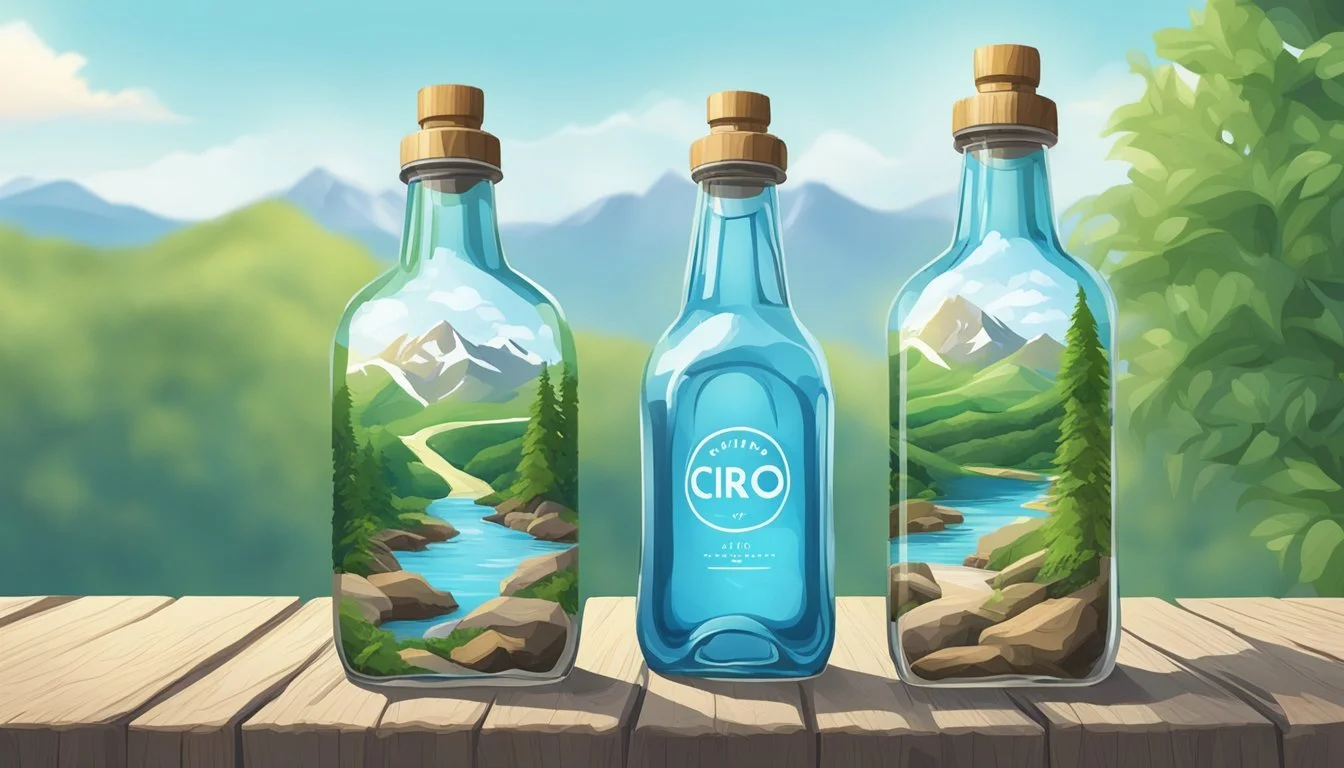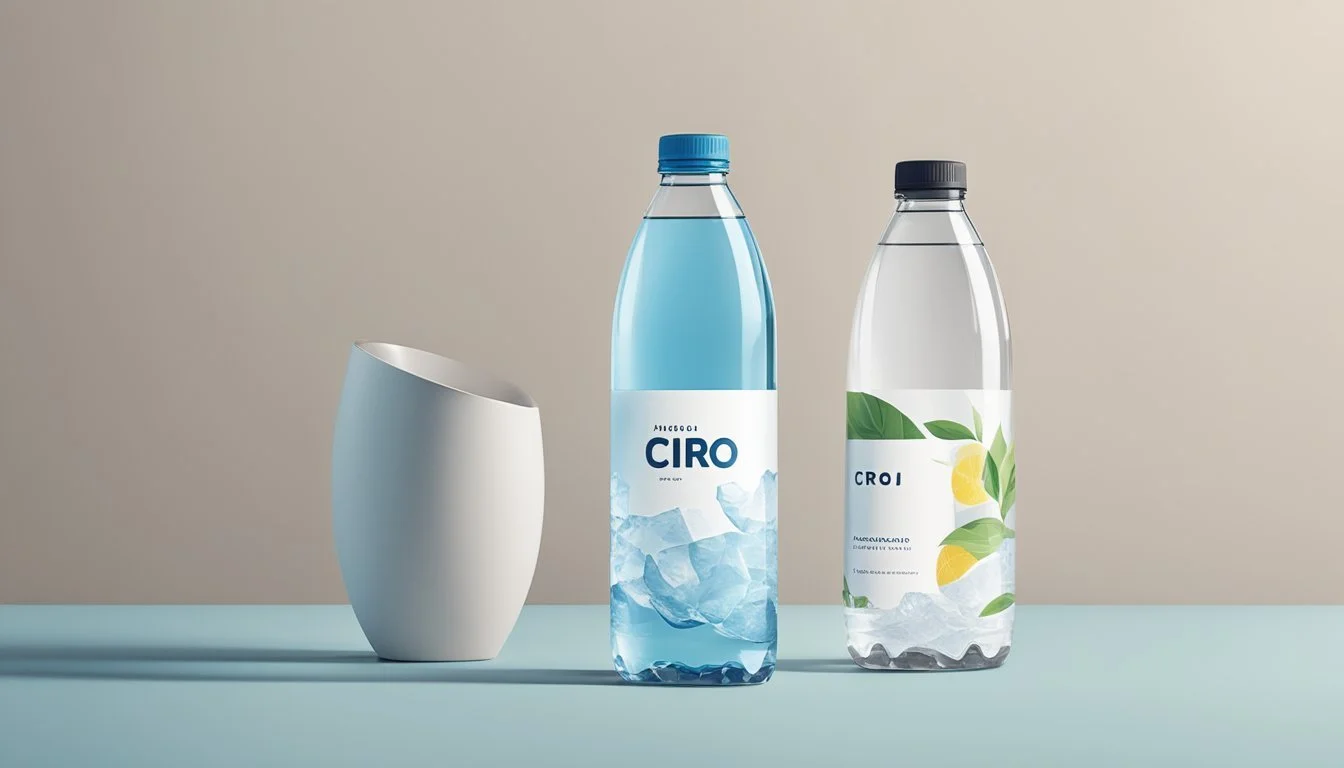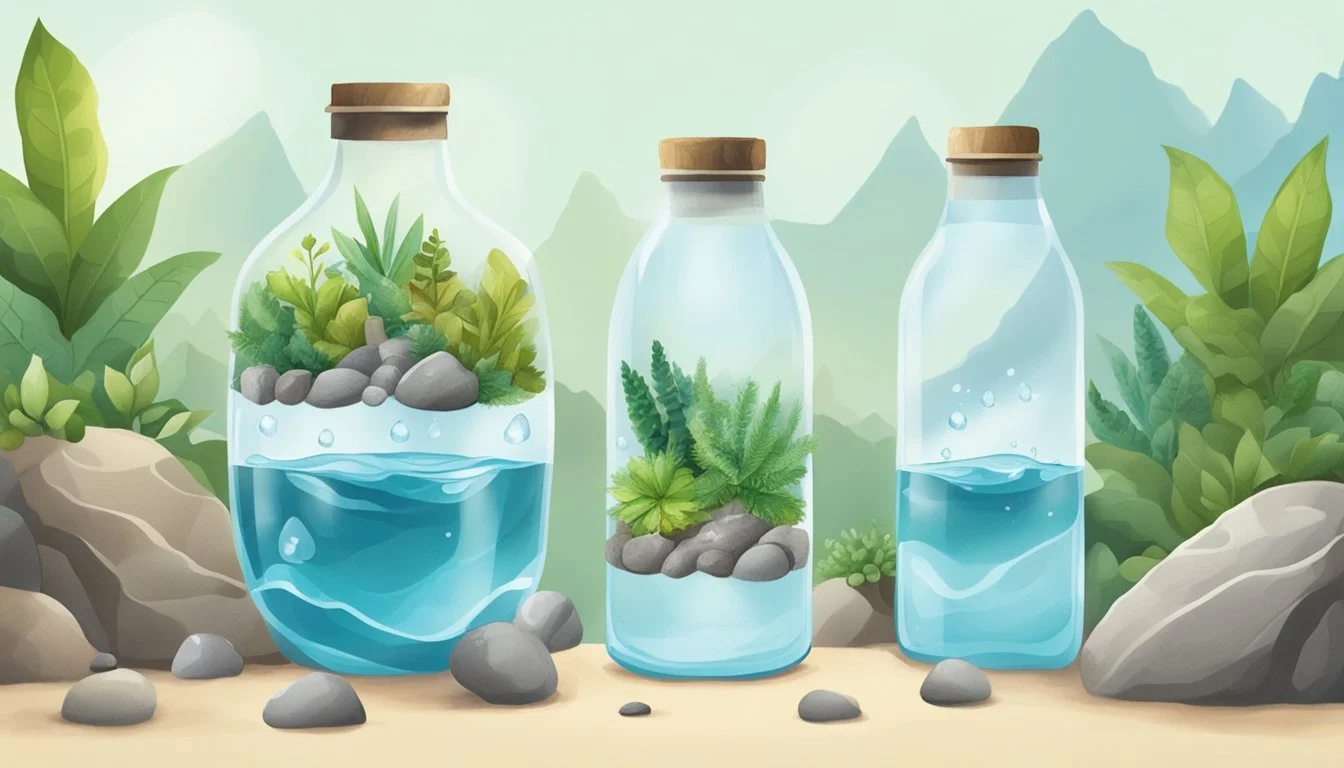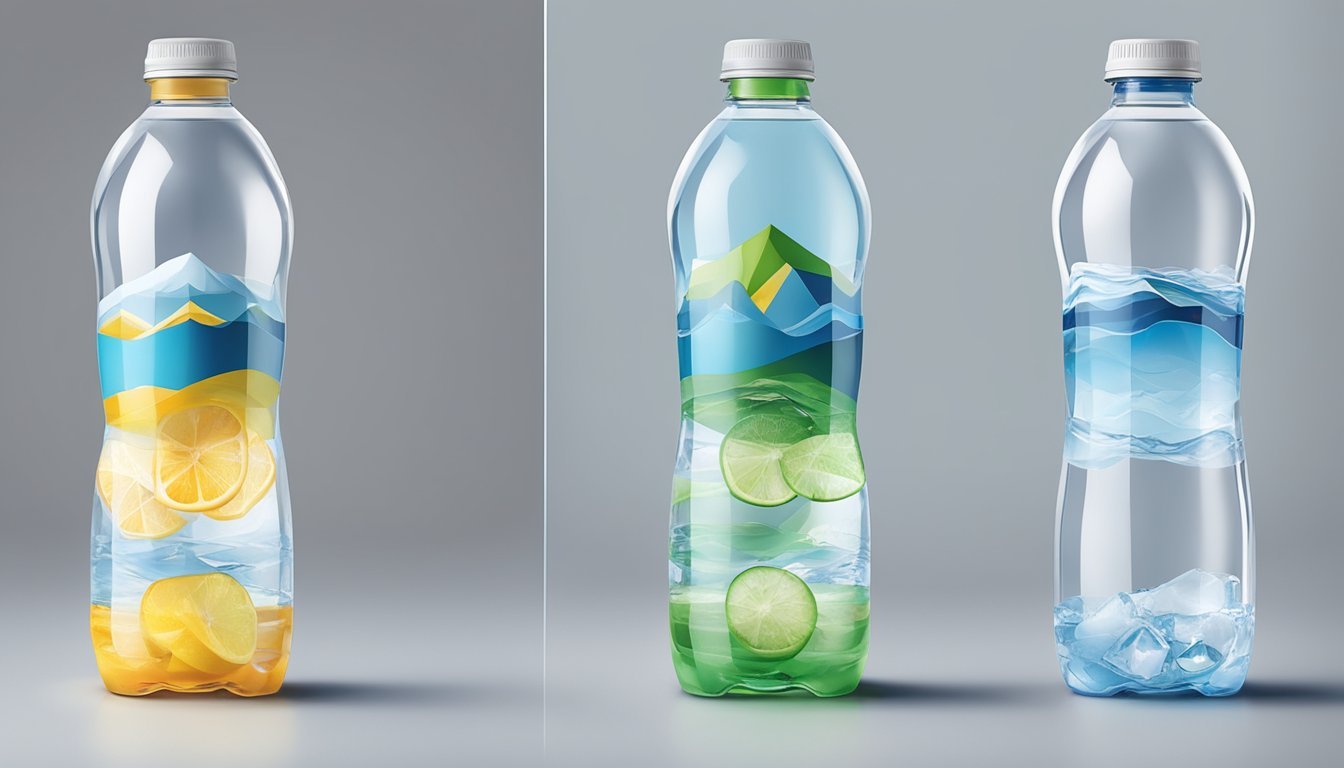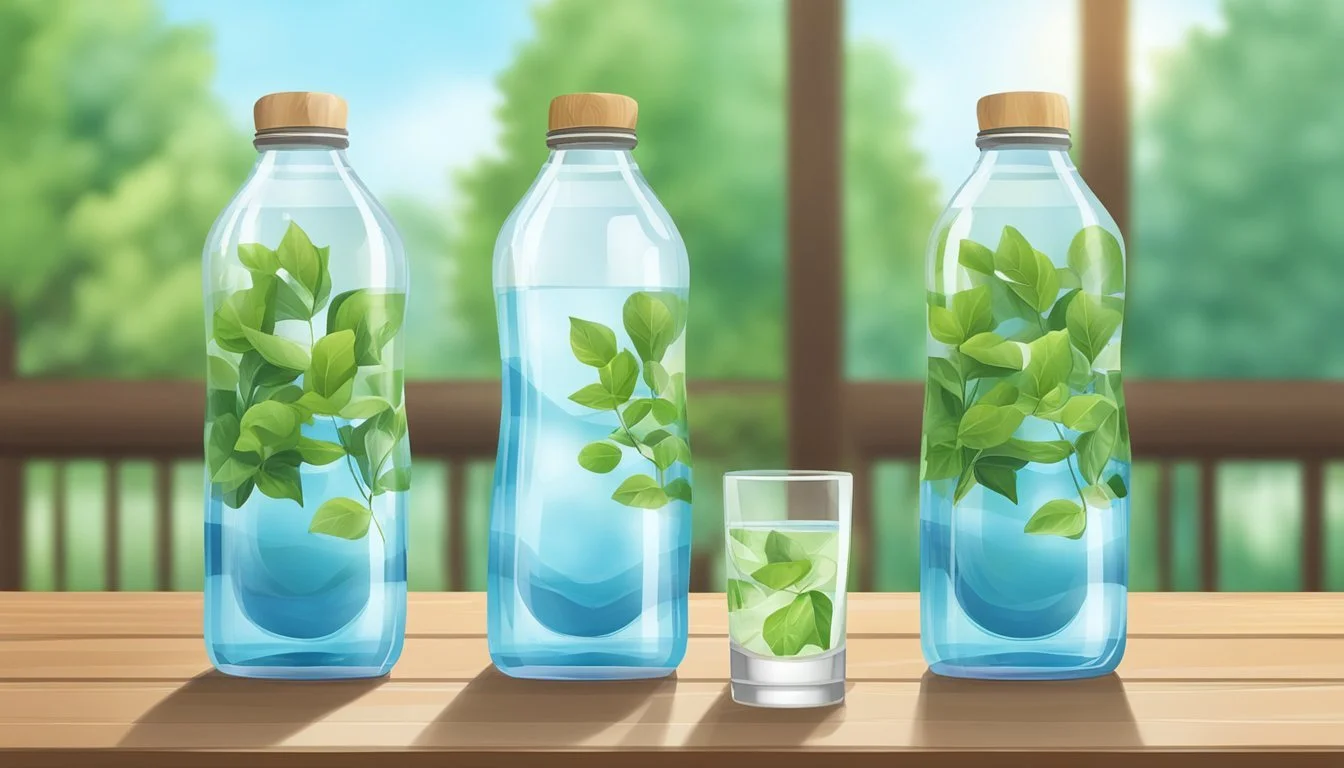Path vs. Cirro
Which Bottled Water is Better for You?
Choosing between Path and Cirro bottled water can be tricky, but it ultimately boils down to what you're looking for in a brand. Path botted water stands out for its commitment to sustainability, offering reusable aluminum bottles that allow consumers to reduce their plastic waste. On the other hand, Cirro's water is praised for its crisp taste and lack of aftertaste.
When it comes to the overall drinking experience, Path wins for its environmental benefits, while Cirro excels in taste. Path's initiative includes providing hydration stations for organizations that ban plastic bottles, emphasizing its eco-friendly ethos. Meanwhile, Cirro provides a clean, refreshing taste that many find enjoyable, making it a contender in the bottled water market based on sheer flavor alone.
Both brands have their merits and ultimately cater to different priorities. If sustainability is your primary concern, Path is the better choice. If you prioritize taste, Cirro may be more appealing. Each offers unique advantages that make them stand out in their respective categories, reflecting the growing diversity in the bottled water market.
Provenance of Path and Cirro
Path and Cirro bottled waters have distinct origins and unique histories that set them apart in the marketplace. Understanding their backgrounds and the sources of their water gives valuable insight into what makes each brand unique.
Historical Background
Path Water emerged with an emphasis on sustainability. Founded in response to growing concerns over single-use plastics, Path Water introduced reusable aluminum bottles. This focus on the environment has driven its brand philosophy and marketing strategy. Their mission revolves around reducing plastic waste and promoting eco-friendly practices.
Cirro Water has a more traditional approach, entering the market with an aim to offer pure, high-quality bottled water. Unlike Path, Cirro does not emphasize reusability but focuses on taste and water quality. Cirro has developed a reputation for its crisp, refreshing taste without aftertaste, appealing to consumers who prioritize flavor.
Source and Origin of Water
Path Water sources its water domestically from natural springs within the United States. This ensures that the water remains fresh and pure. The specific locations of these springs have been selected to minimize environmental impact and support sustainable water management practices.
Cirro Water sources its water globally, seeking out locations known for exceptionally pure water, such as Iceland and Fiji. Icelandic glacial water and Fiji water are notable sources that contribute to Cirro's product line. These waters are celebrated for their natural filtration processes and mineral content, enhancing the taste and quality of Cirro's offerings.
To Summarize
Path Water focuses on sustainability with its domestic spring sources and reusable bottles, while Cirro boasts an international selection of high-quality waters, emphasizing taste and purity. Both approaches cater to distinct consumer preferences and environmental philosophies.
Composition and Water Quality
Understanding the composition and water quality of Path and Cirro bottled waters helps consumers make informed choices. Key considerations include their pH levels, mineral content, purity, and presence of any contaminants.
pH Levels and Mineral Content
Path bottled water typically has a pH level around 7.5 to 8.0, indicating it is slightly alkaline. It contains minerals such as calcium, magnesium, and potassium, which contribute to its taste and potential health benefits.
Cirro water also maintains a similar pH range, providing a fresh and neutral taste. The mineral content includes notable elements like sodium and sulfate, which can be essential for bodily functions.
A comparison:
Path: pH 7.5-8.0; contains calcium, magnesium, potassium
Cirro: pH 7.0-8.0; contains sodium, sulfate
Both brands emphasize balanced mineral content to enhance hydration and flavor.
Purity and Contaminants
Path ensures high purity through rigorous filtration processes that eliminate common contaminants. They adhere to EPA standards for safe drinking water, removing impurities such as chlorine and heavy metals. Regular testing helps maintain this purity.
Cirro also prioritizes water purity with advanced purification techniques. This includes reverse osmosis and UV treatment to eradicate pollutants. Consumer Reports found that some bottled waters had toxic PFAS chemicals, but neither Path nor Cirro were implicated in this issue.
Both brands are committed to providing contaminant-free water, ensuring it is safe and beneficial for daily consumption.
Health Implications
When comparing Path and Cirro bottled water, considerations around drinking water safety and hydration benefits, including electrolytes, are essential. These factors impact daily health and should be evaluated carefully.
Drinking Water Safety
Ensuring the safety of bottled water involves assessing the presence of contaminants, such as nanoplastics, and adherence to regulatory standards. Recent studies highlight that a liter of bottled water can contain up to 240,000 plastic particles, a concern for long-term health.
Path and Cirro need to be evaluated for their filtration processes and material safety. Both brands claim rigorous testing and high-quality standards, but specifics may vary. Examining certifications and third-party testing results can provide more confidence in choosing a safer option.
Hydration and Electrolytes
Hydration is not just about water intake but also about maintaining essential electrolyte balances. Bottled waters like Path and Cirro often include added minerals and electrolytes to enhance hydration.
Electrolytes such as sodium, potassium, and magnesium are crucial for bodily functions, like nerve signaling and muscle contraction. While some prefer distilled or purified water with electrolytes added, others look for natural mineral content.
Path offers water enriched with minerals, whereas Cirro may focus on purified aspects. Understanding these differences helps in choosing a product that best supports individual hydration and health needs.
Taste Experience
When comparing Path and Cirro bottled waters, the taste experience is a crucial factor to consider. Both brands offer distinct flavor profiles that can impact your preference.
Flavor Profile Assessment
Path water has a clean and crisp taste with a hint of mineral presence. Many describe its flavor as refreshing and pure, largely due to its rigorous filtration process. This makes it a go-to choice for those who appreciate simplicity and a neutral palate.
Cirro water, on the other hand, carries a slightly sweet undertone, reminiscent of spring water sourced from mineral-rich areas. Some water sommeliers appreciate the gentle, velvety texture it offers. This subtle sweetness sets it apart, providing a more indulgent drinking experience.
Each water brand's unique taste attributes cater to different preferences, making the comparison a matter of personal choice. Path offers a straightforward, refreshing flavor, while Cirro provides a more nuanced, slightly sweet taste.
Environmental and Social Impact
Path and Cirro, two prominent bottled water brands, have significant implications for the environment and society. Examining their sustainability practices, packaging solutions, and social impact will provide an informed perspective.
Sustainability Practices
Path promotes environmentally friendly measures by prioritizing sustainable sourcing. They ensure their water is collected from renewable sources and follow strict guidelines to avoid resource depletion.
Cirro aims to be carbon neutral by investing in renewable energy projects and reducing their overall carbon footprint during production and distribution. They also implement water conservation measures to minimize their environmental impact.
Both companies emphasize sustainability but adopt different strategies to achieve their goals.
Packaging and Recyclability
Path uses innovative aluminum bottles that are fully recyclable and designed for multiple uses. This approach helps reduce the reliance on single-use plastic and encourages consumers to reuse rather than discard their packaging.
Cirro, on the other hand, uses BPA-free plastic bottles but emphasizes the importance of recycling programs. They have introduced initiatives to improve the recyclability of their packaging materials and support various recycling campaigns globally.
Their efforts illustrate a commitment to reducing the accumulation of waste, with Path focusing more on reusable options and Cirro enhancing recyclability.
Impact on Communities
Path engages with local communities by supporting water access projects and educational programs about sustainable living. They contribute portions of their profits to fund clean water initiatives in underserved regions.
Cirro collaborates with various non-profits to improve water quality and availability. They actively participate in community-driven projects, aiming to provide long-term benefits and support for local populations.
Both brands demonstrate a commitment to social responsibility, working towards improving community welfare and promoting an ethical approach to business operations.
Packaging and Design
Path and Cirro both put a lot of thought into their packaging and design, focusing on user experience and sustainability. Their choices for materials and aesthetic elements aim to offer safety, convenience, and visual appeal.
Bottle Materials and Features
Path bottled water is packaged in recyclable aluminum bottles. Aluminum is known for being a sustainable material, as it can be recycled multiple times without losing quality. These bottles are sturdy, lightweight, and come with BPA-free linings to ensure safety.
Cirro opts for a different approach. Their bottles are made from high-quality, BPA-free plastic. This choice allows for a slight reduction in weight, making the bottles easier to carry. The plastic used is also recyclable, though not as eco-friendly as aluminum. Both brands include ergonomic designs that are easy to grip and suitable for active lifestyles.
Branding and Consumer Appeal
Path takes a minimalist approach to branding, with sleek, modern designs that emphasize their commitment to sustainability. Their logo and color schemes are understated, focusing on conveying a premium image. This approach attracts eco-conscious consumers who value both design and environmental impact.
Cirro's branding leans towards bright, vibrant colors and dynamic patterns. Their branding strategy aims to stand out on shelves, appealing to a younger, more active demographic. The bold design elements and eye-catching labels emphasize the brand's energetic and contemporary image.
Both brands succeed in crafting an image that mirrors their core values, be it sustainability or youthful vigor, enhancing their appeal to targeted consumer groups. The use of recyclable materials and visually appealing designs make both Path and Cirro compelling options for bottled water.
Market Presence
Both Path and Cirro have established themselves in the bottled water market. They differ significantly in their availability, distribution strategies, and brand perceptions.
Availability and Distribution
Path and Cirro are found across various retail locations, including grocery stores and specialty shops.
Path boasts a wide distribution network, ensuring its presence in major supermarket chains as well as smaller retailers. This broad reach helps maintain Path's visibility, making it a convenient choice for customers on the go.
Cirro, while also widely available, focuses on select higher-end grocery stores and health food outlets. This strategy aligns with its positioning as a premium brand, although it may limit its availability in some regions compared to Path.
Brand Perception and Reputation
The reputation of Path and Cirro diverges based on their marketing and target audience.
Path is perceived as a brand prioritizing environmental sustainability with its reusable aluminum bottles. This eco-friendly approach has garnered a positive reception from environmentally-conscious consumers and enhanced its brand reputation.
In contrast, Cirro is viewed as a premium option, appealing to those seeking high-quality water with distinct mineral profiles. This premium positioning is reflected in its pricing and selective distribution, catering to a niche segment that values exclusivity and superior taste over other factors.
Price Comparison
Shoppers often look for the best balance between cost and quality when choosing bottled water. Path and Cirro cater to different budgets and preferences, making it essential to contrast their prices carefully.
Affordability Analysis
Path Water tends to fall on the more expensive end of the spectrum. With its reusable aluminum bottle, the brand pitches itself as a premium option. Consumers are paying not just for the water but also for the sustainability aspect. This higher initial cost can be offset over time if the bottle is reused multiple times, providing some value for money.
Cirro Water, on the other hand, positions itself as a more inexpensive choice. Packaged in traditional plastic bottles, it appeals to those looking for a straightforward, low-cost option. This means less initial investment, making it more accessible for routine, everyday consumption. However, this lower price point does not contribute to those seeking eco-friendly solutions.
Cost vs. Quality
Path Water justifies its higher price with claims of higher quality and environmental benefits. The brand ensures that the water undergoes multiple quality checks and often markets itself as rich in essential minerals. This enhanced quality might attract consumers desiring a premium product, despite its higher cost.
Cirro Water, while providing a budget-friendly alternative, may not guarantee the same level of quality control as Path. It focuses on being a cost-effective solution. Though the water is safe and regulated, the perceived quality may be lower due to its economical packaging and possibly fewer filtration processes.
By presenting both options, consumers can weigh the benefits of higher initial costs with ongoing savings and better quality versus immediate affordability.
Consumer Habits and Preferences
Consumer habits around bottled water are evolving, influenced by health considerations and environmental concerns. A growing segment of consumers is shifting from bottled to reusable bottles for daily hydration.
Trends in Bottled Water Consumption
Bottled water has seen a significant increase in consumption over the past decade. This rise aligns with a decline in sugary drink consumption, indicating a preference for healthier choices. Consumers are drawn to bottled water for its portability and perceived purity.
In the 1990s, safety concerns, such as excessive chlorine and fecal coliforms, prompted recalls. Despite these historical issues, bottled water remains popular due to improved regulations and public awareness.
Demographics play a key role. Younger adults (18-44) favor bottled water more compared to those 55 and older. Moreover, women show a higher preference for bottled water than men.
Reusable Bottle Adoption
The shift towards reusable bottles is notable. This trend reflects growing environmental awareness and lifestyle changes. Reusable bottles reduce reliance on single-use plastics, which helps mitigate plastic pollution.
Municipal water improvements and the Safe Drinking Water Act have bolstered confidence in tap water. This is crucial as it supports the reusability of bottles, enabling convenient refills from safe sources.
Many choose reusable bottles for their cost efficiency and reduced environmental impact. They align with a sustainable lifestyle, making them an attractive option for eco-conscious consumers looking to minimize waste while staying hydrated.
Conclusion
Path and Cirro both bring their unique qualities to the table. Path is known for its purified water which users found to have a crisp taste without aftertaste. On the other hand, Cirro competes closely with a slightly tangy finish that might not appeal to all.
Path provides eco-friendly packaging options, emphasizing sustainability. Cirro, while not explicitly noted for such packaging, maintains its draw through quality and reliable taste profiles.
When deciding which is better, it's essential to consider personal preferences and values. If sustainability and a cleaner taste matter, Path is a solid choice. For those who prefer a bit of unique character in their water, Cirro may stand out more.
Recommendation: If a clean, straightforward water experience is desired, go for Path. For those open to a slight tang and a different flavor profile, Cirro is worth trying. Both have their merits and can cater to various tastes and preferences.
More About Path
Mountain Valley Spring Water vs Path: Which Bottled Water is Better?
Path vs Whole Foods Italian Still Mineral water: Which Bottled Water is Better?

